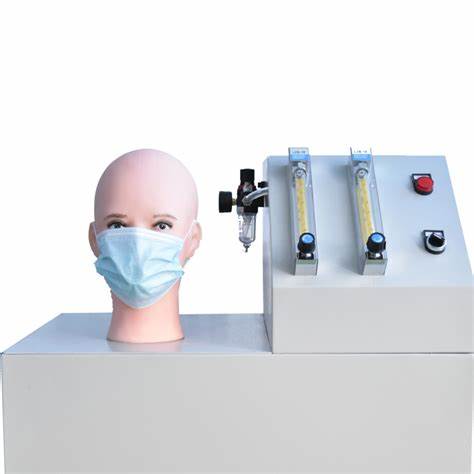Factors Affecting Respiratory Resistance in Disposable Medical Masks

Several factors can influence the respiratory resistance of disposable medical masks. These factors include:
1. Filtration Material: The type and characteristics of the filtration material used in the mask can significantly impact respiratory resistance. Different materials, such as melt-blown polypropylene, electrostatically charged fibers, or other microfiber materials, have varying levels of air permeability and resistance. The density, thickness, and structure of the filtration layer can affect how freely air can pass through the mask, thus influencing respiratory resistance.
1. Number of Layers: The number of layers in the mask can impact respiratory resistance. Adding additional layers can increase filtration efficiency but may also increase resistance to airflow. Manufacturers need to strike a balance between filtration performance and breathability by optimizing the number and arrangement of layers in the mask.

1. Design and Construction: The design and construction of the mask, including its shape, size, and fit, can affect respiratory resistance. A well-fitted mask with a proper seal around the edges reduces air leakage and improves filtration efficiency, but it can also increase resistance due to a smaller airflow path. The presence of features like exhalation valves can also affect respiratory resistance.
1. Porosity and Pore Size: The porosity and pore size of the mask material can impact respiratory resistance. A higher porosity or larger pore size allows for better airflow but may compromise filtration efficiency. Conversely, a denser material with smaller pores can enhance filtration but increase resistance to airflow.
1. Moisture Accumulation: Moisture accumulation within the mask due to factors like humidity, exhaled breath, or sweating can increase respiratory resistance. Moisture can affect the properties of the filtration material, making it less breathable and more resistant to airflow.
1. Mask Integrity: Any damage or deformation to the mask, such as tears, holes, or improper sealing, can impact respiratory resistance. These issues can create additional air leakage points, disrupting the intended airflow path and increasing resistance.
It's important to note that respiratory resistance is a critical factor in mask performance, but it needs to be balanced with filtration efficiency, comfort, and overall mask effectiveness. Manufacturers and regulatory bodies consider these factors when designing, testing, and evaluating disposable medical masks to ensure they meet the required standards for both filtration and breathability.
2023-08-17 11:47

